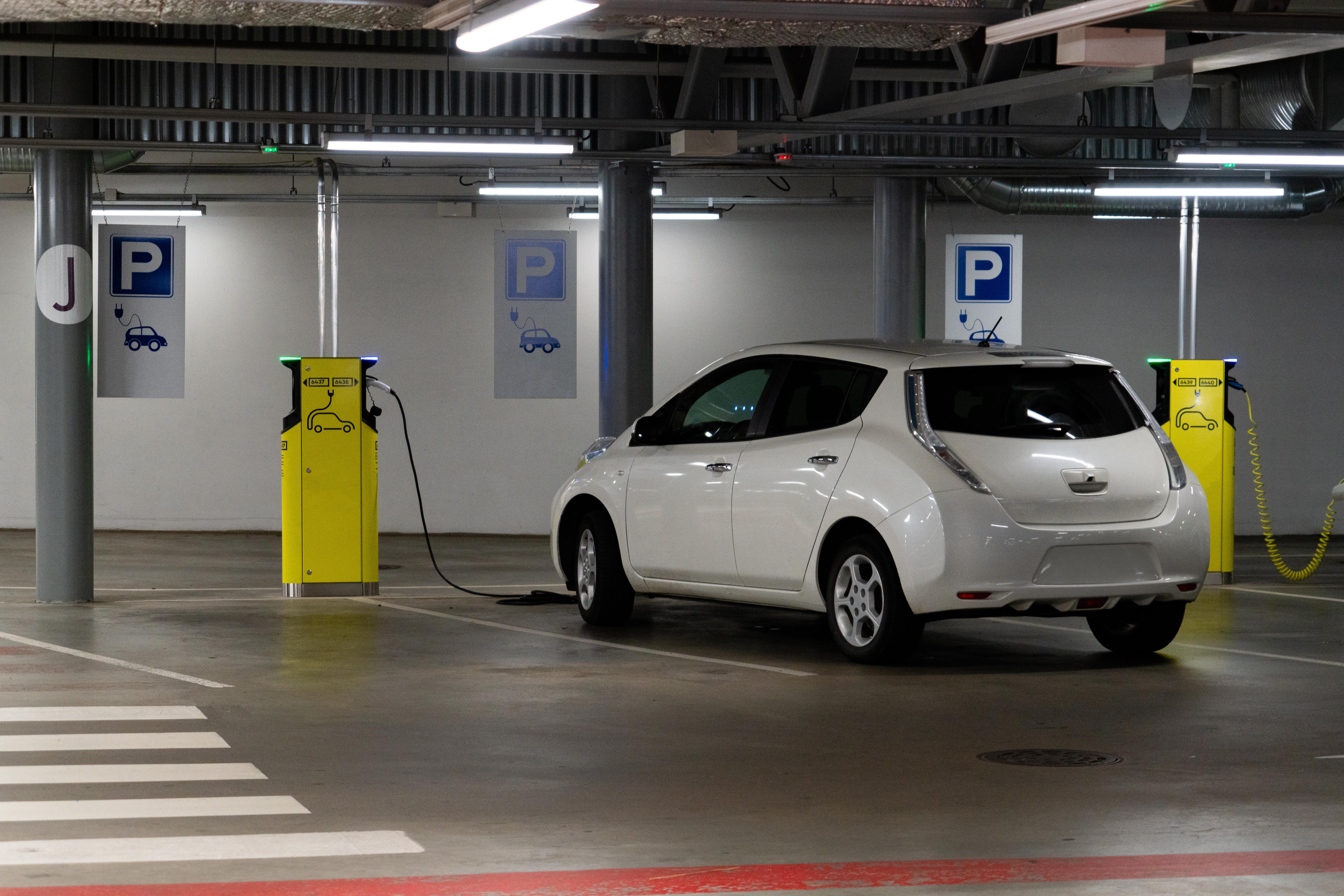- November 16, 2023
- Perspectives, Trending Topics
The Four Keys of Airport EV Charging Infrastructure


Robert Ferrin, CAPP
Parking and Mobility Practice Lead

Jerry Schwientek, PE
Transportation and Aviation Project Manager
Many airports feel the pressure to quickly build electric vehicle (EV) charging infrastructure. But proceeding without a proper strategy can be costly in the long run. A plan that meets only the short-term EV charging demands and does not account for future growth or challenges will quickly crumble. Forward-thinking airports should prioritize these four considerations when planning their EV charging infrastructure.
Meeting Customers’ EV Charging Demands and Expectations
Sustainability is shaping customers’ travel decisions and experiences. A 2022 study by Booking.com found that 81% of travelers value sustainable travel. Airports may only need 50 EV chargers in traveler parking lots now. But what if they need 500 chargers in five years? They must begin building the proper infrastructure now to support more chargers in the future. Otherwise, they will have to start from scratch with new chargers and make another extensive financial investment.
At the same time, electric vehicles represented 7.9% of new car sales in the U.S. in Q3 of 2023. Even with strong growth, the number of people who own EVs is much smaller than those who own traditional cars. Airports need to know their consumer base and how much space and funds they should dedicate to EV charging.
With EVs rising to the forefront of green travel, airports also must plan for electric vehicles in multiple landside locations. Airports need to review all facility areas that need EV charging stations, including:
- Rental car lots
- Employee parking areas
- Cell phone waiting lots
- Valet parking areas
- Rideshare and taxi lots
- Shuttle bus parking and dwelling areas
- Airside for ground service equipment
What “Levels” of EV Charging Do Airports Need?
There are three levels of EV charging, and airports need to contemplate how many of each level charger to install.
Level one EV chargers plug into a 120-volt outlet and take days to charge a vehicle fully. These are best for long-term parking. Since the travelers will be gone for days, their vehicles will have plenty of time to charge. Level one chargers also have the lowest impact on existing electrical systems.
Level two EV chargers run on a 220-volt outlet and fully charge a car within eight hours. They are the most common charger in public areas. This level of charging best suits airport employees or people who pick up or drop off individuals at the airport.
Level three EV chargers, also known as direct current fast chargers (DCFCs), charge vehicles up to 15 times faster than a level two charger. These are best to charge vehicles quickly and will significantly impact existing electrical systems. This level of charging may be considered in cell phone waiting lots, valet parking areas, and rideshare and taxi lots. Airports must carefully balance electricity supply, demand, and cost across DCFCs and properly budget for their higher installation costs.
For example, airports may need load management software to manage the electrical system capacity across DCFCs. This technology can manage which vehicles are charged in which order over a 24-hour period, avoiding high peak-usage charges and thereby extending the electrical system capacity.
The number and type of EV chargers may require utility upgrades. Airports should coordinate with local utilities as soon as possible to ensure sufficient capacity in the long term and the rightsizing of equipment to support new chargers when they come online.
Planning for Ongoing Maintenance
EV charging infrastructure is not a one-time investment. Rather, it requires continuous maintenance, care, and upgrades.
Maintenance can include securely storing charging cables, regularly checking parts, and cleaning equipment. As a first step, procuring a warranty on the equipment can help avoid potentially costly pitfalls. Even so, airports should plan for intermittent repairs and troubleshooting from normal wear and tear. Best practices will guide facility owners to budget for maintenance and operations costs as part of the procurement negotiations, installation costs, and revenue sharing.
Potential Revenue Generation: Costs and Risks
Airports want to earn back the cost of the charging equipment and installation, and they have multiple options.
As a first step, airports may qualify for grants to reduce the purchase and/or installation costs. Once EV chargers are installed, airports may require payment at each EV charging station. Users could pay by the hour, by the day, or with a fixed rate regardless of the charging time.
Alternatively, airports can increase base parking rates for everyone who enters the parking facility, EVs or not. This is the simplest approach but may raise ethical and policy questions. Airports could also create a “nested” area dedicated solely to EVs with a separate cost from adjacent parking areas. This way, only those using EVs pay for the charging stations.
When planning for EVs, taking a strategic and calculated approach is imperative. This allows airports to identify and overcome potential challenges—saving them time and money in the future and giving customers one less stressor during their travels.
About the Authors

Robert Ferrin, CAPP
For nearly 20 years, Robert has specialized in smart city solutions, urban and economic development, transportation planning, and asset management. Robert joined Kimley-Horn after nearly five years with the City of Columbus, where he led the Parking Services team as a Department of Public Service Assistant Director. Before his role in Columbus, he held parking and mobility leadership roles in Aurora and Denver, Colorado, and Charlotte, North Carolina. Robert currently sits on the International Parking & Mobility Institute Board, where he advances smart cities, research and innovation, and electrification.

Jerry Schwientek, PE
Jerry has more than two decades of experience working in and around airport landside facilities. He has worked on planning complex public parking and rental car facilities, including customer service, ready return, and quick turnaround facilities. Jerry’s airport work also includes public, employee, and rental car facility demand forecasting, campus roadway networks, parking functional planning, structured parking design, and revenue control systems. Jerry’s engineering experience allows him to uniquely plan facilities by understanding the constraints of operations due to constructability and code limitations. Jerry is known for his attention to detail, collaboration, and proactive approach for the various aspects involved in airport landside planning.
